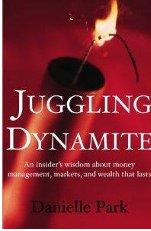Today, we received further confirmation of Canada’s deteriorating labour market, with March payrolls falling 54,100 to a 10-month low, and a negatively revised 40,200 fewer jobs in February (Stats Can survey of employers, payrolls, and hours).
Canada’s largest lender, Royal Bank, also disappointed with an earnings miss after setting aside $1.42 billion for loan losses in the three months through April, above the $1.26 billion analysts had forecast. See RBC misses estimates as bank prepares for souring loans.
To help counter the drag on its share price, RBC announced that it would increase its dividend and buy back as many as 35 million common shares. Royal Bank shares are down 3% on the day, notwithstanding.
All of the big six Canadian banks have increased loan loss provisions in the first quarter.
With Canada’s 6.9% unemployment rate in April set to rise for the foreseeable future and 60% of Canadian mortgages set to reset to current interest rates in 2025-2026, payment stress and delinquencies are on the rise.
For sale listings are also leaping in most areas. As of May 2025, the Toronto housing market has reported a 45% year-over-year rise in new listings, surpassing 31,000.
The increase in inventory is attributed to several factors, including economic uncertainty, shifting immigration policies, and cautious buyer sentiment. As a result, sellers are more motivated to list their properties, leading to a higher supply in the market. These trends offer buyers more options and negotiating power, resulting in longer selling times and more competitive pricing. Sale prices were 3.8% to 6.9% lower year-over-year, depending on the property type (shown below, courtesy of WOWA).
 At the same time, Canada’s April core inflation measures, which exclude volatile items like food and energy, rose above 3%. This elevated inflation picture complicates the Bank of Canada’s goal of promoting economic growth while maintaining price stability.
At the same time, Canada’s April core inflation measures, which exclude volatile items like food and energy, rose above 3%. This elevated inflation picture complicates the Bank of Canada’s goal of promoting economic growth while maintaining price stability.
The Bank of Canada’s next rate announcement is scheduled for June 4, and although markets predict no rate cut, weaker-than-expected economic data could alter this outlook.



